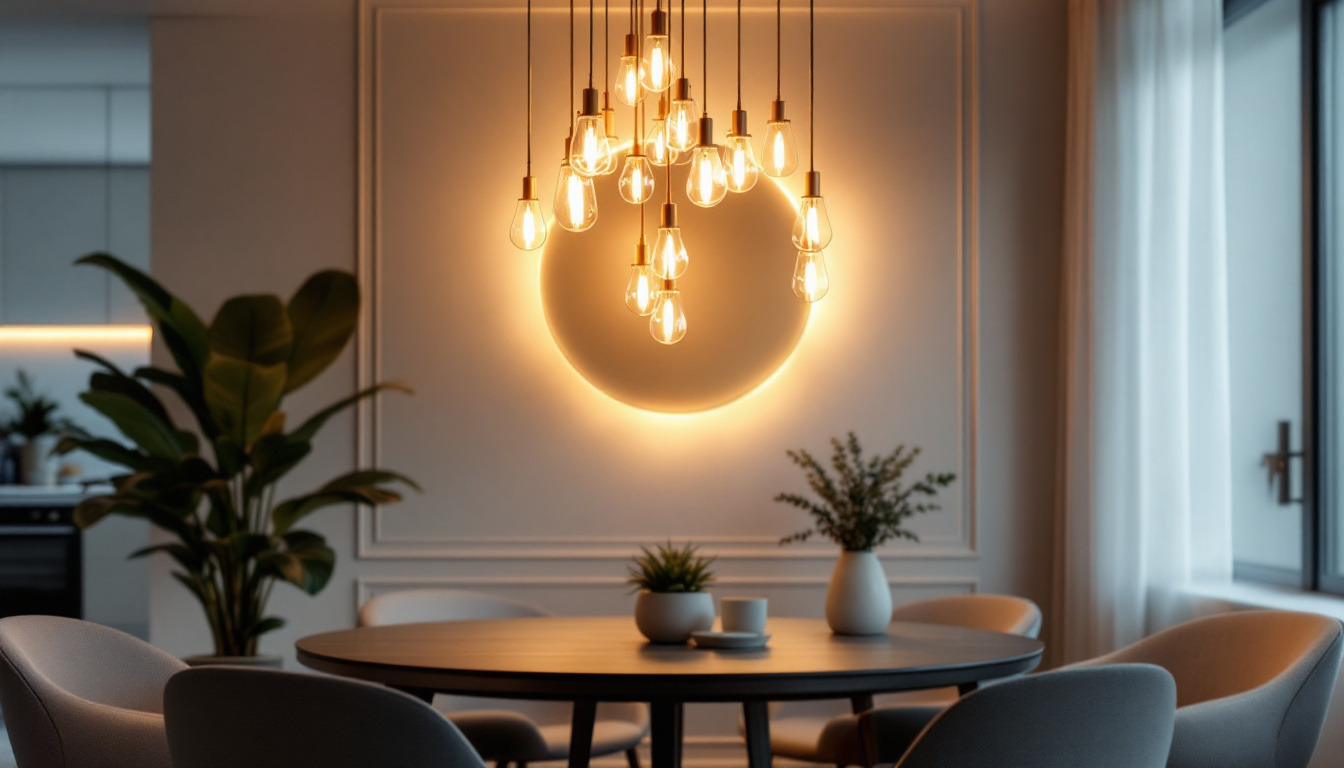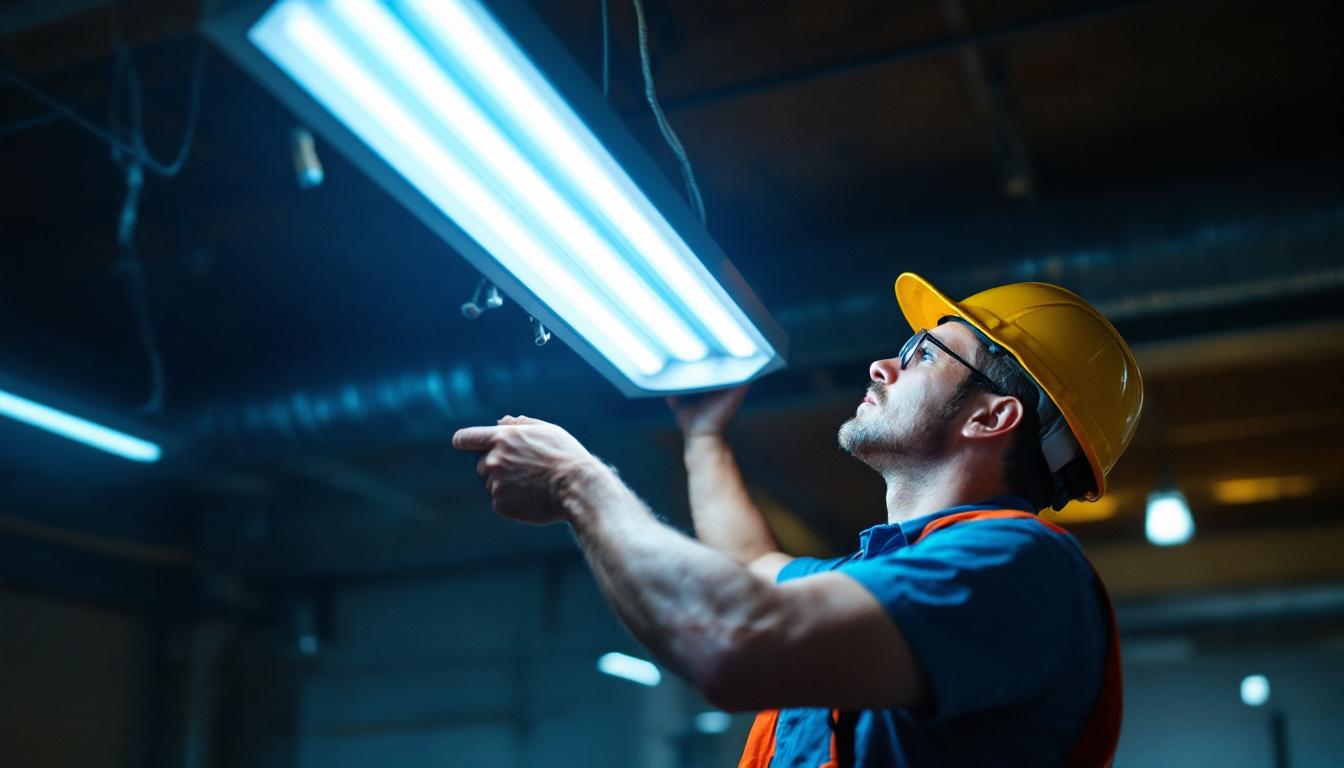
In the world of lighting design, art light fixtures play a crucial role in enhancing both functionality and aesthetics. For lighting contractors, understanding the nuances of selecting and installing these fixtures can significantly impact the overall success of a project. This guide aims to highlight common mistakes that can occur during the process, providing insight and tips for avoiding pitfalls that could compromise the quality of the installation.
Art light fixtures are not merely functional; they serve as integral components of a space’s design. They can transform an ordinary room into an extraordinary one, drawing attention to artwork, architectural features, or creating a specific ambiance. As such, contractors must appreciate the dual role these fixtures play in both illuminating and enhancing a space. The right light fixture can evoke emotions, set the mood, and even influence how colors and textures are perceived. For instance, warm lighting can create a cozy atmosphere, while cooler tones can lend a more modern and spacious feel. This interplay between light and design is crucial in creating environments that resonate with their occupants.
One of the primary mistakes contractors make is focusing solely on aesthetics while neglecting functionality. While a stunning fixture may catch the eye, it must also provide adequate illumination for the intended space. Contractors should consider the type of light required—ambient, task, or accent—and ensure that the chosen fixture meets these needs without compromising the visual appeal. Moreover, the placement of these fixtures is equally important; a beautifully designed chandelier may lose its impact if hung too high or too low, failing to provide the desired effect. Understanding the interplay of light distribution and fixture design can lead to a harmonious balance that enhances both form and function.
Another common oversight is selecting fixtures that are either too large or too small for the space. A light fixture that is disproportionate can disrupt the visual harmony of a room. It’s essential to measure the space accurately and consider the scale of furniture and other design elements. A well-proportioned fixture will enhance the overall design rather than detract from it. Additionally, the height of ceilings and the layout of the room should inform the choice of fixture size. For instance, in a room with high ceilings, a larger pendant or chandelier can create a stunning focal point, while in a cozy nook, smaller sconces or table lamps might be more appropriate to maintain intimacy. By thoughtfully considering these factors, contractors can ensure that each light fixture complements the overall design narrative of the space.
Even with the right fixtures, improper installation can lead to issues that affect both performance and aesthetics. Contractors must be diligent in their installation practices to avoid these common errors.
Placement is critical when it comes to art light fixtures. A frequent mistake is positioning fixtures too high or too low, which can lead to inadequate lighting or unflattering shadows. For example, when highlighting artwork, the fixture should be placed at an angle that maximizes visibility while minimizing glare. Understanding the specific needs of the space will help ensure that fixtures are installed in the most effective locations. Furthermore, the distance between the fixture and the artwork should be carefully calculated; too far away can diminish the impact of the lighting, while too close can create harsh contrasts that detract from the piece itself. Taking the time to experiment with different placements during a mock setup can yield insights that lead to optimal lighting results.
Electrical considerations are paramount when installing art light fixtures. Failing to account for the electrical load can result in flickering lights or, in severe cases, electrical fires. Contractors should always verify that the existing wiring can support the new fixtures. Additionally, using the correct wattage is crucial to avoid overheating and prolonging the lifespan of the fixtures. It’s also essential to consider the type of bulbs being used; LED options are often favored for their energy efficiency and lower heat output, but they may require specific dimmers or transformers to function correctly. Moreover, ensuring that all connections are secure and that the circuit is properly grounded can prevent future complications and enhance the overall safety of the installation.
The materials and finishes of art light fixtures can significantly impact both their performance and aesthetic appeal. Contractors must be mindful of these choices to ensure they align with the overall design vision. Selecting the right materials not only enhances the visual impact of the fixtures but also affects their durability and functionality, making it a crucial aspect of the design process.
One mistake often made is selecting fixtures that clash with the surrounding decor. For instance, a modern fixture may look out of place in a traditionally styled room. It’s essential to consider the overall design theme and select fixtures that complement the existing elements. This attention to detail will create a cohesive look that enhances the space. Additionally, the scale and proportion of the fixtures should be taken into account; oversized fixtures can overwhelm a small room, while tiny fixtures may get lost in a larger space. By harmonizing the size, style, and finish of the fixtures with the surrounding decor, contractors can create a visually appealing environment that feels thoughtfully designed.
Maintenance is another critical factor that is frequently overlooked. Some materials may require more upkeep than others, which can be a burden for clients in the long run. Contractors should discuss the maintenance requirements of different finishes and materials with clients, helping them make informed decisions that align with their lifestyle and preferences. For example, polished metals may require regular polishing to maintain their shine, while matte finishes can be more forgiving in terms of fingerprints and smudges. Furthermore, the choice of materials can also influence the longevity of the fixtures; high-quality materials may come with a higher initial cost but can save clients money over time due to their durability and reduced need for replacement. By providing clients with a clear understanding of the maintenance involved, contractors can ensure that the selected fixtures will not only look great but also stand the test of time.
The color temperature of light fixtures can dramatically affect the mood and functionality of a space. Understanding how to choose the right color temperature is essential for contractors aiming to create the desired ambiance.
One common mistake is selecting a color temperature that does not suit the intended use of the space. For example, warm white light (around 2700K) is often preferred for living areas, while cooler temperatures (above 4000K) may be more suitable for workspaces. Contractors should educate clients on the differences and help them choose fixtures that align with their vision.
Not all light is created equal. The quality of light emitted by a fixture can vary significantly based on the type of bulb used and the fixture design itself. Contractors should prioritize fixtures that provide high-quality light, which can enhance colors and textures in the space, ultimately leading to a more satisfying visual experience.
Every project begins with understanding the client’s vision. Miscommunication or assumptions can lead to significant missteps in the selection and installation of art light fixtures.
Effective communication is key to ensuring that the final result aligns with the client’s expectations. Contractors should take the time to understand the client’s needs, preferences, and any specific requirements they may have. Regular check-ins and updates throughout the process can help ensure that everyone is on the same page.
Clients may have evolving needs or plans for their space in the future. Contractors should discuss potential changes with clients, such as renovations or redecoration, and recommend flexible lighting solutions that can adapt to these changes. This foresight can save time and money down the line, as well as enhance client satisfaction.
The lighting industry is constantly evolving, with new trends and technologies emerging regularly. Contractors must stay informed to provide the best solutions to their clients.
One significant mistake is overlooking advancements in lighting technology, such as LED options and smart lighting systems. These innovations not only offer energy efficiency but also provide enhanced control over lighting environments. Contractors should educate themselves on the latest technologies and consider how they can benefit their clients.
Sustainability is becoming increasingly important in design and construction. Clients are often looking for eco-friendly solutions, and contractors should be prepared to offer options that align with these values. This may include recommending energy-efficient fixtures or discussing the benefits of sustainable materials.
Art light fixtures are a vital aspect of any lighting design project, and avoiding common mistakes can lead to successful installations that meet both aesthetic and functional needs. By understanding the importance of these fixtures, paying attention to installation details, and staying informed about trends and technology, lighting contractors can elevate their work and enhance client satisfaction.
Ultimately, the goal is to create spaces that not only look beautiful but also serve their intended purpose effectively. By following this guide and being mindful of potential pitfalls, contractors can ensure that their projects shine brightly, both literally and figuratively.
Ready to bring your lighting designs to life while ensuring the best value for your projects? Look no further than LumenWholesale. We provide contractors with an extensive selection of top-quality, spec-grade lighting products at unbeatable wholesale prices. Say goodbye to inflated markups and hello to reliable, high-performance lighting that meets the highest industry standards. With free shipping on bulk orders, you can trust LumenWholesale to deliver premium lighting solutions that combine quality, affordability, and convenience. Elevate your lighting installations and discover the best in wholesale lighting today.

Discover essential insights for lighting contractors on selecting and installing garage lights.

Discover the essentials of DLC (DesignLights Consortium) and its impact on the lighting industry.

Discover what distinguishes leading lighting contractors in the realm of UV sanitizing technology.

Discover essential insights and expert tips for lighting contractors working with four bulb fluorescent light fixtures.